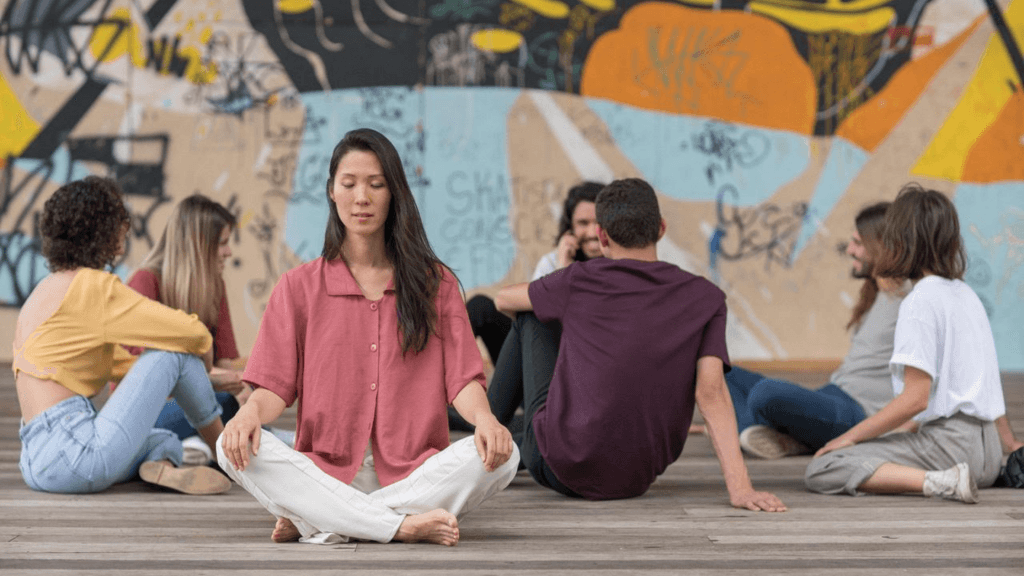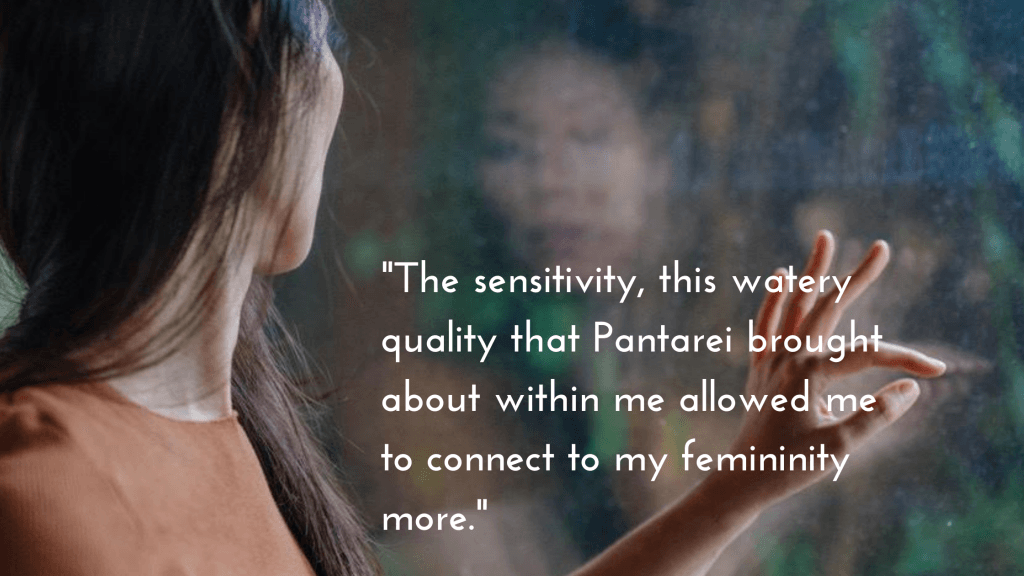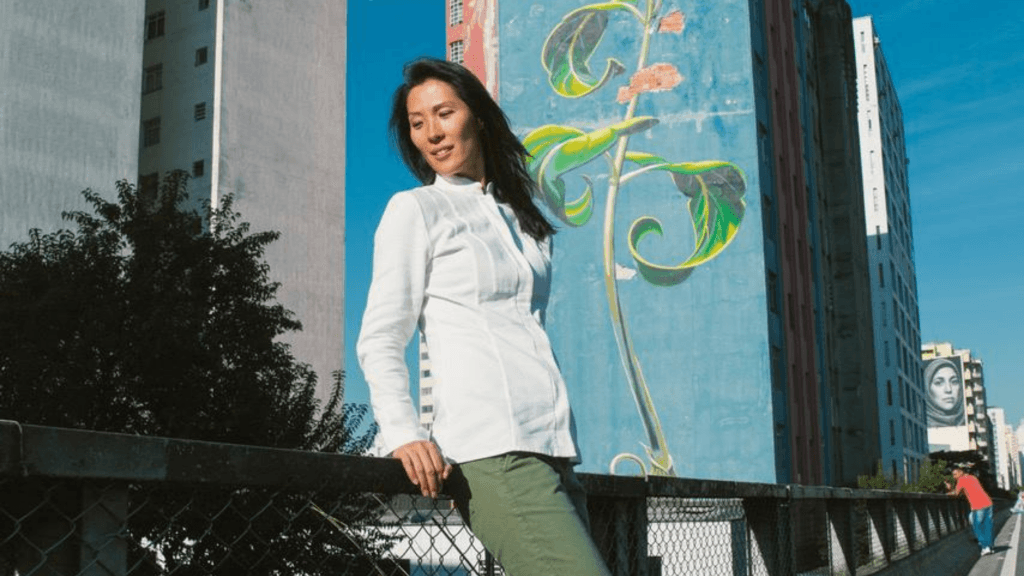
Viviane Kao, Pantarei Approach Practitioner
BRIDGING CULTURES
When Viviane speaks, her expression slides between humorous, hopeful, serious, and down to earth. Her voice ‘mmmms’ and her face lights up when asked about her daily schedule. “I love my days! Because I get to create them. How they will flow. It’s the most empowering feeling I’ve felt so far. I basically try to leave my mornings free. During the quarantine it has been possible to do this. I can put my clients in the afternoon now and use the mornings to recharge myself. I get up super early. Exercise, meditate, cook my food. Then my sessions start, and they start from a beautiful place because I feel fully in contact with myself. “
Viviane’s daily life now is almost a 180 degree turn from her past, while working in marketing, and within banks, chemical and pharmaceutical companies. At first, it was her dream to combine her skills in communication, writing and medicine. However, she now describes it as the ‘dark side of the corporate world’ as she got to understand how the industry thinks of disease and cure. And she started to realize her own physical pains were her body’s way of responding.
A Turning Point
“So there were several pains: there was psychological pressure, and emotional abuses. They all led to some kind of expression in my body. I had insomnia. The first thing when I woke up, I thought of my boss and the PowerPoint I had to deliver. I had tendinitis. I had extreme back pain; cervical, shoulder and lower back. I didn’t know what it was like to live without those pains in my body. It was all forms of expression that I could feel, from an unbalanced state inside of myself that had to do with the psychological pressure I was under.”
In one session of bodywork, she explains how her practitioner intellectually and physically got straight to the point, which took her two years of traditional therapy to get to.
“She left me that day with questions. I needed to work, but I was in a crisis in the corporate world, which I wanted to leave, and I didn’t know how. How do I exist without all these things that have been promised and I learned to believe since I was young? She asked me on that session what I wanted to do with my life. I stayed home for a week and realized I wanted to do something similar to my practitioner. She immediately said there is a school that teaches you that. And that’s how my journey began, and it’s been a beautiful journey since then.”

What is São Paulo like?
“It is the 4th most populated city in the world. It is massive. There is this mixture of everything you can imagine. Diversity in cultures, in finance status, tastes. I feel that it has satisfied me a lot in the cultural sense. It has allowed me to meet people all over the world, speak many languages and try different flavors. It is a city that lives a lot on appearances.
I think it is one of the most indebted countries. Every Brazilian has high debts. One of the things that I correlate this with is how much we spend on keeping up appearances. It has been a place that is very hungry for this type of bodywork. To connect to the body and feeling. It has been very rich and I feel there are many things to be touched here.”
How is the body traditionally viewed in your culture?
“When you ask that it touches me on two points, because I feel I belong to two cultures — the Brazilian and the Chinese. They complement each other while being from extreme sides of the world. From a Brazilian perspective, there is a deep connection to the aesthetics of the body. They care about how they look and looking healthy. They are very focused on the result they are going to get.
At the same time, there is a great distance to feeling what the body says and needs. There is a lot of mental activity going on. And here there is a bridge to the Chinese culture, because the Chinese are much more reserved with their bodies. It is a lot less about showing them off. Their health is their main concern. Because Traditional Chinese Medicine (TCM) is so fundamental, it is something everyone grows up with. We grow up since childhood with the Yin-Yang concept in our upbringing, which influences what we eat and do in order to be connected to the flow of nature. The sunrise and sunset, has a lot of connection to the flow of nature. It has been a thrill for me to understand and feel my own body with this clash of two cultures.
And in-between these two distances, I found Pantarei”

Viviane explains that the holistic view in TCM is very intellectual, and treatments like acupuncture and massage are focused on taking away the pain. Instead, she wants to use her knowledge of TCM while incorporating the Pantarei Approach to bring about a quality in her clients where they learn to understand themselves and get in touch with their feelings. In this space between, Viviane uses Pantarei to bridge cultures, to bridge qualities within herself, and to create a pathway for societal change.
Between Two Distances
“Pantarei was a bridge, within myself of course and with all the knowledge I carry with my ancestry. I think what Pantarei gave me as a main tool is an ability to open up and be curious about diversity – about the individual. About the uniqueness that each one brings, and it doesn’t matter the culture, because within culture, there are subcultures. So it’s really about having the ability to truly look at someone without categorizing their culture, or gender or judgements. After I graduated from the Pantarei school I went back to studying TCM.“
“The sensitivity, this watery quality that Pantarei brought about within me, allowed me to connect to my femininity more. I believe I was always more to the Yang, to the male: active, corporate, earning the money, the “Go get it” girl. And that distanced myself from my feminine qualities which brought me unbalances like endometriosis. I had an opportunity to use Pantarei to look into my body, to see this aggression was a self-aggression. A cutting off of the female qualities and female energy within myself.”

In your opinion or observation why do people disconnect their mind and body, what causes this separation?
“The body and mind are expressions of Yin-Yang. The male and female, the emotions and rationalities; dual forces. The feeling that I get is, we are so disconnected because for a long time we’ve been told what to believe regarding what is right and what is wrong. We live in a truly special moment now. An epoch, a zeitgeist of change. We’ve let the mind be too important. We have valued the mind more. So it’s a controversial moment because as much as we need contact with our body, we are also looking for more info and basing ourselves on science. Especially with Corona now. We have all looked for more intellectual ways of feeding ourselves, and technological solutions. But all our bodies are longing for something more.”
“There has been a disconnection, where we valued something for so long, we believed it and now it’s a process of looking into this belief. How do we let it go and more importantly what do we replace it with? I don’t think it’s about bringing something from the past, but more about co-creating something brand new that doesn’t exist yet. Getting in contact with this Yin quality hasn’t existed before.”
I ask Viviane about her dream. She pauses and invites me to listen and walk with her as she finds the words.
“My dream today is… I feel there is an inbalance in the world between Yin-Yang. And we’ve all been living in a very Yang society. I have this dream where in the search for balance, we all start to get in touch with our Yin more. And…there is no way to get in contact with our Yin if we don’t get in contact with who we are.”

A final thought?
“When the pandemic first started, I worried people would stop coming and I would have to go online. But it’s really amazing, because it shows how essential our work is. My clients have kept coming more than ever. I feel the work we do is essential during crises and confusing times. People show how important our work is when they yearn for it. I feel it.”
You can get in touch with Vivane via her Website, or write her an email vi**************@***il.com
Photos by Bruna Hissae, Naira Mattia.
by Mike O’Connor, sh*************@***il.com


